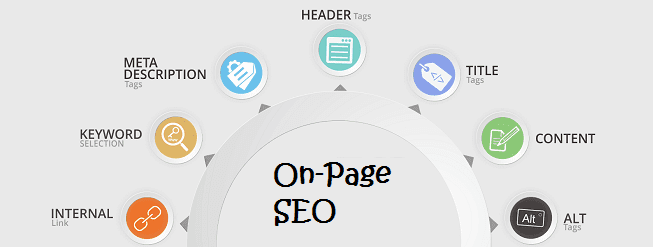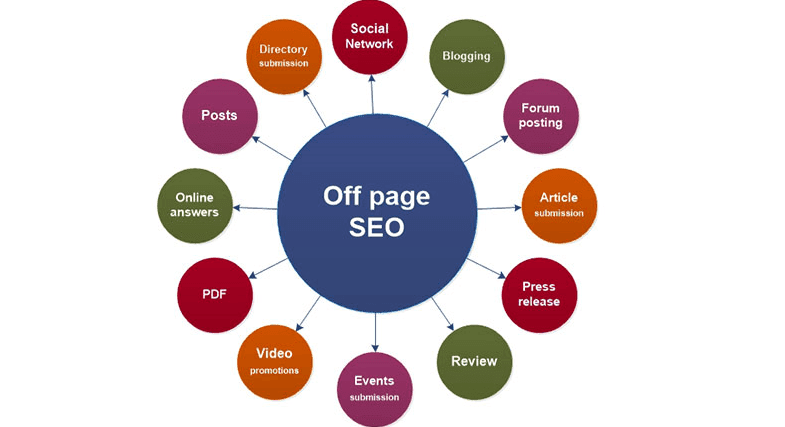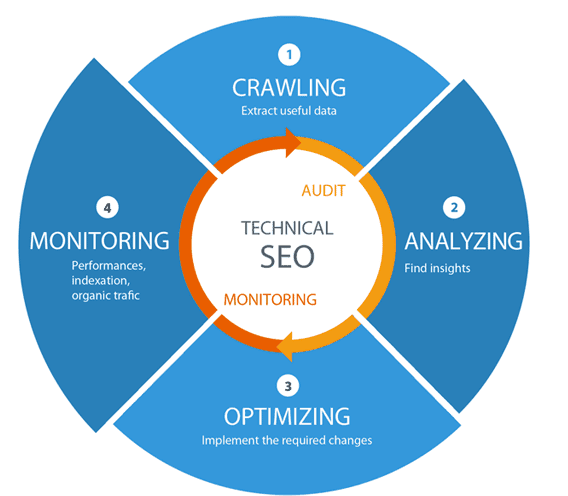What Is SEO & How It Works?

Search engine optimisation, or SEO, is a digital marketing technique that focuses on the visibility of your website in search engine results. SEO practices have evolved throughout the years. The only constant in the practice of SEO, like in life, is “change.” SEO’s speed of evolution is also shifting. It’s getting faster as search results become tailored, and searchers expect to be able to get answers anytime, anywhere, and anyway, they want.
There are numerous advantages to using SEO for your brand or business. You may try to increase your presence on search engines by enhancing your SEO. This allows you to reach out to and engage with a larger number of potential customers. You can boost your chances of pulling in more targeted organic traffic by developing more effective and meaningful SEO-focused content.
This practice is different compared with paid advertising. The main distinction between SEO and paid advertising is that SEO incorporates “organic” ranking, which implies you don’t have to pay to be in that spot.
You must first grasp how SEO works in order to better comprehend how you can rank your content higher in the search engines. In this article, you will discover how to utilize SEO practices so you can optimise your content to rank higher on Google.
How Does SEO Work?

Increased visibility, or making it simpler for customers to find you when they search for anything you have to offer, is among the most crucial tasks of SEO. Your ranking is directly proportional to your exposure. The higher you rank on a search engine result page; the much more likely prospective customers will see you and visit your website.
Now that you understand why SEO is vital, let’s take a closer look at how it works. Search engines have crawlers – the automated robot kind. These crawlers gather a variety of data about your site and the web pages that make it up. This enables them to quickly decide when a searcher should be served a page from your website. Website speed, title tags, social signals, link building, and other factors are gathered.
There are a number of things to consider and measures that can be made to try to optimise a site with over 200 ranking factors used by Google in their algorithm. These ranking factors influence how well your website is optimised and, as a result, how well it ranks on the search result pages. SEO experts create a unique SEO strategy and improve their website ranking by keeping these ranking factors in mind.
3 Ultimate Elements Of SEO
If you are trying to rant your website in search engine result pages, here are three ultimate elements of SEO that you should be aware of while optimizing your website:

On-Page Optimisation

On-page SEO is the process of optimizing web pages in order to increase a website’s search engine result ranks and generate organic traffic. Following are the key elements of on-page SEO:
- Keywords Research
Keyword research is the method of determining words or phrases (referred to as “keywords”) that users use in search engines such as Google, Bing, as well as YouTube. Keyword research has an impact on all other SEO tasks, including content topic generation, on-page SEO, and content promotion.
That is why, in most SEO campaigns, keywords research is considered the initial step. To put it another way, keywords serve as a compass for your SEO strategies, indicating where you should go and if you’re moving in the right direction.
- Meta Tags
Meta tags have been an essential ranking factor from the beginning of SEO. Meta tags, which describe what the website is about, are frequently displayed beneath the title of the webpage in the SERPs.
While Google claims that meta tags have no bearing on rankings, evidence suggests that indirect features of improved tags do. The click-through rate (CTR), an impression of the quality of the result, and perception of what your site delivers can all be improved by properly optimizing meta tags.
- Content (EAT), Headings & Content Hierarchy
If you want your website or web pages to rank higher, start crafting catchy headlines, stick to the content hierarchy, and make E-A-T (Expertise, Authoritativeness, and Trustworthiness) a part of your SEO plan. A good headline can make the difference between a click and an impression, which is why it’s critical to do so effectively.
On the other hand, Google raters employ the E-A-T structure to evaluate content creators, websites, and webpages as a whole. Besides, the most important information should be at the top of the webpage, and the least important should be at the bottom. This is known as a content hierarchy. So, if you want to improve your rankings, consider these factors.
- Images Optimization & Alt Tags
Adding images to your websites is a great way to make them more engaging. However, not all images are made equal, and some can even cause your website to slow down. By appropriately optimizing images, you can make the most out of a vital SEO asset.
Additional ranking chances (appear up in Google Image Search), improved user experience, and faster website load times are just a few of the benefits of image optimization. Make sure to utilize meaningful titles and alt text with images that complement your content.
- Internal Linking
Links are required for your content to rank. When your posts and pages are linked to from anywhere on the internet, Google finds them easier. Internal links interconnect your content and offer Google an understanding of your website’s structure.
They can help you create a site hierarchy by allowing you to offer the most relevant pages and posts additional link value than less relevant pages and posts. All in all, implementing a good internal linking approach will you rank higher!

Off-Page Optimisation

Off-page SEO refers to the methods undertaken outside of your website that have an impact on your SERP rankings. These comprise various basic SEO elements that assist a site rank, in addition to on-page SEO.
In simple words, Off-page optimization is all about building quality backlinks on your website. Backlinks are used by search engines to determine the quality of the content linked to, therefore a site with a lot of high-quality backlinks will normally rank higher than a site having fewer backlinks.
Off-page SEO simply informs Google about what other people think of your website. For instance, if you have a bunch of great links pointing to your site, search engines will believe you have excellent content – something that visitors value.
While generating backlinks from external sites is the most frequent off-page SEO approach, “off-page SEO” can refer to nearly any activity that takes place outside of your own site and assists you enhance your search ranking position. Some examples of these include social media marketing, guest blogging, linked and unlinked brand mentions, and influencer marketing are examples of these.

Technical SEO

The technique of optimising your website so that search engines like Google can discover, crawl, analyze, and index your content is known as technical SEO. The purpose is to grow visibility and enhance rankings. Consider these important elements of technical SEO:
- Website Speed
Webpage speed is considered a significant ranking signal by search engines, which prioritize sites that load quickly. You can improve the speed of your website by using fast hosting, a fast DNS provider, minimizing HTTP requests, compressing your web pages, and minifying the code.
- Broken Links
Landing on a webpage that doesn’t exist is possibly even more unpleasant for users than a slow webpage. People will see a 404-error page if they click on a link that links to a non-existent page on your site. That’s the end of your meticulously designed user experience!
Furthermore, search engines despise finding these error web pages. And, because they examine every link they come across, even if it’s hidden, even more, broken links than visitors.
- Sitemap & Robots
An XML sitemap is a file that assists search engines to explore your site and comprehend it. Imagine it as a kind of “search roadmap,” informing search engines where each webpage is located. It also includes essential information about each page on the website, such as when it was last changed, what prominence it has on the site, and how often it is updated.
- UX/UI
Google’s algorithms have altered dramatically to place a greater emphasis on the UI and UX that their users experience. Google gives web pages a higher rating based on two factors: the convenience with which users engage with a website (UI) and the overall satisfaction with which users leave a website after browsing on it (UX).
- Mobile Friendliness
A ‘responsive’ website design changes automatically to allow for easy navigation and reading on any device. Google makes it obvious that having a responsive website is a highly important ranking indicator for its algorithms. A responsive website has become more vital than ever, according to Google’s new “mobile-first” approach to crawling content. As a result, it’s a good idea to make sure your website is totally responsive and displays in the best possible way for mobile, tablet, as well as desktop users.
SEO Practices
The process of planning, highlighting, and incorporating steps to improve search engine rankings is known as an SEO strategy. In other words, an SEO strategy is a method you use to increase organic traffic to your website. Following are the three essential SEO strategies that everyone should implement.

White Hat SEO
White Hat SEO refers to SEO strategies that follow the specific terms and conditions of the main search engines, such as Google and Bing. White hat SEO, in general, relates to any procedure that enhances your rankings on a SERP while ensuring the integrity of your website. The following are some examples of white hat SEO:
- Providing superior content
- Mobile-friendly website with quick loading times
- Using meta tags that are keyword-rich and descriptive
- Making your website simple to use

Black Hat SEO
Black Hat SEO is a set of techniques for improving a website’s or web page’s ranking while violating the search engines’ terms and conditions. These methods can lead to the site’s removal from the search engine and affiliate sites.
On Google’s Webmaster Guidelines as well as Bing’s Webmaster Guidelines, a list of practices and strategies used by black hat SEO practitioners has been officially rejected.

Grey Hat SEO
Grey Hat SEO is a riskier SEO technique than White Hat SEO, but it may or may not lead to your site being banned from search engines. Because the terms of service governing the issue are unclear, Grey Hat SEO methods do not fall in either the Black Hat or White Hat categories.
Grey Hat SEO is vital to understand since it may either increase your site’s ranking without causing adverse implications or cost you a lot of lost traffic.
Conclusion
You may now focus on making adjustments to your site to increase SEO after understanding it and how it works. Additionally, you can now improve your search engine results page rankings. Remember that several elements influence the meaning and success of your SEO efforts.
However, the most crucial factor to evaluate is if your content is worthwhile and relevant to your target audience. It’s also important to remember that SEO takes time to perform its magic. You won’t see the effects of SEO right away.